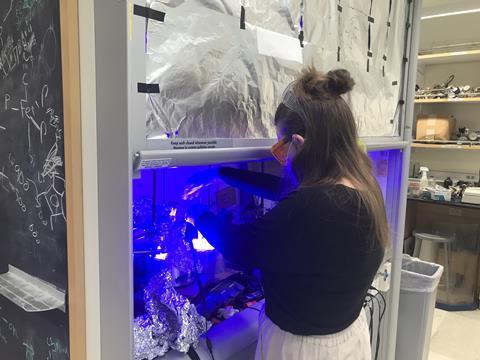Californian researchers developed a cleaner, more efficient method of producing ammonia through photocatalysis.

Ammonia is an essential ingredient in fertilizers, fulfilling a key role in the agricultural sector. Unfortunately, producing ammonia is a dirty, inefficient process. A group of researchers at the California Institute of Technology developed a new way to produce ammonia through photocatalysis, which can take place at standard temperature and pressure. They published their results in Science Advances.
Photoreduction of small molecules is an attractive alternative to aggressive reagents, but no synthetic photocatalytic system had yet been developed for nitrogen reduction. A reduced Hantzsch ester (HEH2) can behave as a 2 e-/2 H+ photoreductor. In combination with a suitable catalyst, in this case molybdenum, this catalyzes the reduction of N2 to NH3 under blue light. An added photoredox catalyst, here iridium, enhances the catalysis. In the end, the reaction achieved a 73% yield with respect to HEH2.












Nog geen opmerkingen